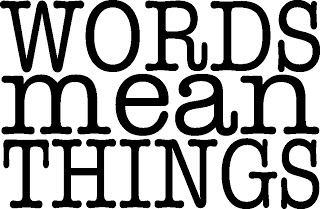When organizations (REITS and providers) end up with under-performing buildings and big lease payments it becomes very difficult to do the right thing for residents, team members and the long term health of all organizations.
By Steve Moran
A few days ago we published an article title “The Real Elmcroft Story.” In that post we talked about the involvement of Kai Hsiao in the existing Elmcroft portfolio. Because of space consideration we did not really do a “What does this mean?” analysis.
Almost overshadowing the Elmcroft news were a series of announcements involving Brookdale:
-
An activist shareholder called for more transparency on the due diligence that was being done or had been done with respect to the pending sale of the company to a Chinese investment group.
-
Bloomberg apparently subsequently reported that the Chinese deal is off.
-
HCP is restructuring their relationship with Brookdale by selling six of their properties to Brookdale, purchasing Brookdale’s interest in two joint ventures; terminating management agreements on 68 communities and retaining the right to terminate the management agreements on another 20 properties. It reminds me of playing Monopoly as a kid.
The Faustian Proposition of REITS
It is no wonder that you have not seen a REIT as a partner at Senior Housing Forum. I think most REIT deals in senior housing are ultimately bad for everyone, even the REITS. Most traditional REIT deals are like being offered 100% financing (with cash back) to purchase a house except that . . .
-
Every few years your interest rate and payments will go up . . . no matter what.
-
You will get no loan paydown
-
When the property gets sold you will get none of the appreciation
No loan company would survive offering this product to consumers.
The fundamental problem with this model is that it assumes that rents, will increase, occupancy will stay stable or increase, that expenses will more or less stay inline with income. It is weird thinking since real estate and business has never been this way since the beginning of time.
Roosting Chickens
You might read the above section and think “well actually this sounds like a really good deal for the REITS”.
Not so. They promise or more technically project returns for their shareholders based on rosey, forever growth. When the building under perform (an assumption about what happened at Elmcroft), the REIT’s do find themselves in the position of having to do something.
In this case between Elmcroft and Brookdale almost 140 properties are in play for presumably suboptimal performance reasons (as opposed to taking profits in high performing buildings).
When organizations (REITS and providers) end up with under performing buildings and big lease payments it becomes very difficult to do the right thing for residents, team members and the long term health of all organizations. There is a focus on cutting costs and this often means cutting care which ultimately further erodes the quality of services which in turn makes it that much harder to retain and attract residents and high quality team members from front line to regional directors, further impacting the bottom line.
The Big Question
At the end of the day, what ends up happening is that these financial entities have as their mission making money and only making money. I am a capitalist and have no problem with that . . . in theory. The problem is that this bottom line mentality . . . and mostly short-term bottom line, becomes the most important thing.
It puts financial institutions in the decision making catbird seat in effect telling operators how to run their buildings and they often don’t really understand the business well enough to be any good at doing this. Their decisions impact tens of thousands of people whose lives depend on these senior living organizations.
REIT’s Are Who They Are
I would be reluctant to say that REITs are the bad guys and that senior living providers are the hapless victims because this is a standard way of doing business by REITs and Senior Living companies picked that type of “financing” because it provided tremendous leverage.
I would even go so far as to say, that if I ran a senior living company I might very well make the decision to use REIT financing on a small percentage of my portfolio.
Frothy Days Ahead
I have always believed and have written and said I expected this to happen. I think I got it partly wrong. It is happening it will continue to happen. I think what I got wrong is that it is going to be a lot more frothy than I believed it would be.
More to come . . .








